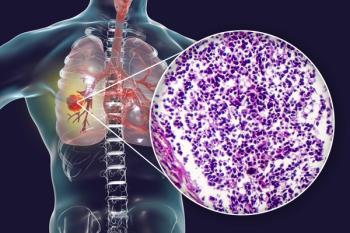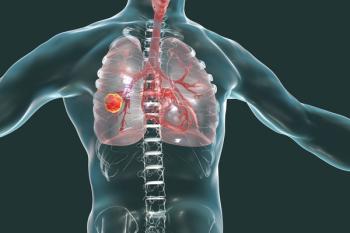
Quiz: Know When to Use SBRT in Lung Cancer?
Do you know what available options exist for a lung cancer patient with a BRAF V600E mutation? How about the best course of action for a patient with T2N2M0 disease? Test your knowledge and take part in a series of case scenarios to see if you can pick the correct course of action for each.
Do you know what available options exist for a lung cancer patient with a BRAF V600E mutation? How about the best course of action for a patient with T2N2M0 disease? Test your knowledge and take part in a series of case scenarios to see if you can pick the correct course of action for each.
Question 1
Answer
D.SBRT has achieved primary tumor control rates and overall survival comparable to lobectomy in randomized in randomized clinical trials
Only in
Question 2
On a chest CT scan, a 54-year-old woman is found to have a right upper lobe mass. She is a heavy smoker. Further work-up with positron-emission tomography (PET)/CT confirms a standardized uptake value (SUV)-active right upper lobe mass and a right hilar node. She undergoes right upper lobectomy and pathology reveals a 5-cm adenocarcinoma, a positive hilar node, and a positive subcarinal node that was not visible on PET/CT.
Answer
C. Adjuvant chemotherapy followed by postoperative radiation therapy
A 2005 study by Bradley et al, which was
Question 3
A patient presents to you with chronic cough. Chest x-ray shows a hilar mass. This is followed by a PET/CT scan that shows a fluorodeoxyglucose (FDG)-avid 4-cm right hilar mass, mediastinal adenopathy, and right supraclavicular adenopathy.
Answer
A.Biopsy of the right supraclavicular node
If the supraclavicular node is positive it would confirm stage IIIB (N3 disease), which would exclude surgery as a treatment option.
Question 4
A 66-year-old man with a 40 pack-year smoking history has been diagnosed with metastatic non–small-cell lung adenocarcinoma negative for EML-ALK rearrangements, with no sensitizing EGFR mutations and negative PD-L1 expression. His cancer progresses after initial treatment with pemetrexed/carboplatin. A multi-gene assay of his tumor reports a BRAF V600E mutation.
Answer
B.Dabrafenib plus trametinib
A
Question 5
Answer
D. KRAS is not an oncogenic driver but rather a passenger, so it is undruggable
Newsletter
Stay up to date on recent advances in the multidisciplinary approach to cancer.

















































































